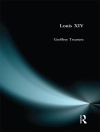While Darwin’s grand view of evolution has undergone many changes and shown up in many facets, there remains one outstanding common feature in its 150-year history: since the very beginning, branching trees have been the dominant scheme for representing evolutionary processes. Only recently, network models have gained ground reflecting contact-induced mixing or hybridization in evolutionary scenarios. In biology, research on prokaryote evolution indicates that lateral gene transfer is a major feature in the evolution of bacteria. In the field of linguistics, the mutual lexical and morphosyntactic borrowing between languages seems to be much more central for language evolution than the family tree model is likely to concede. In the humanities, networks are employed as an alternative to established phylogenetic models, to express the hybridization of cultural phenomena, concepts or the social structure of science. However, an interdisciplinary display of network analyses for evolutionary processes remains lacking. Therefore, this volume includes approaches studying the evolutionary dynamics of science, languages and genomes, all of which were based on methods incorporating network approaches.
Over de auteur
Heiner Fangerau ist Direktor des Instituts für Geschichte, Theorie und Ethik der Medizin der Heinrich-Heine-Universität Düsseldorf. Seine Forschungsschwerpunkte sind die Geschichte der Medizinischen Diagnostik, Historische Netzwerkanalysen und die Medizin im Nationalsozialismus.












